Download The Racing Line on iOS today and get 70% off a year's subscription!
A Ferrari win in Italy. It's what the tifosi dream of, and some will have been there at Imola, in the beautiful Emilia Romagna region of Italy, near Bologna, to witness it. An iconic moment for many of them, no doubt.
James Calado summed it up well after the race, saying, 'This is one of the finest wins of my career, because I’d never stood on the top step of the podium in front of our own tifosi before.
'It’s an incredible feeling and I’m proud we managed to return to winning ways after such a long time – and to do it here at home.'
However, based on the pace Ferrari had with its three 499Ps — two scarlet factory cars and one yellow 'customer' or 'satellite' car — they could have had at least two cars on the podium, if not three. That is, if it wasn't for a brilliant piece of strategy work from BMW and Alpine.
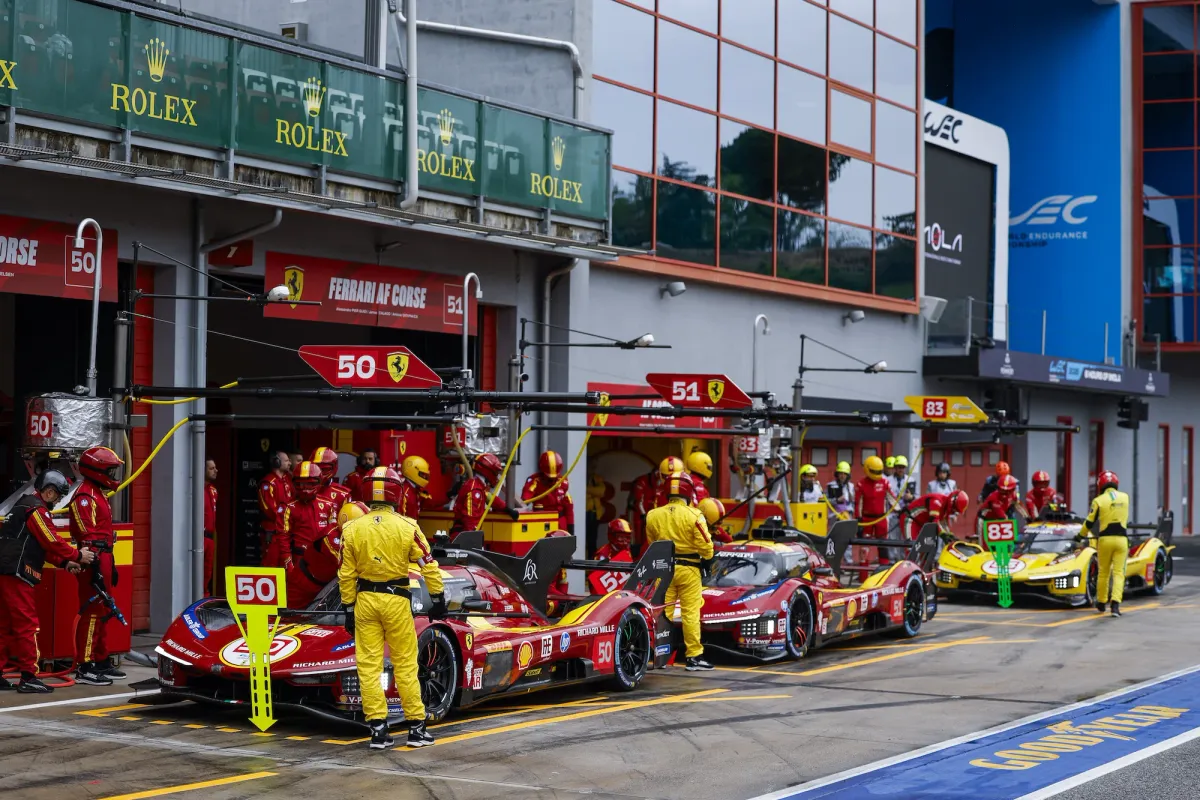
So, how did the German and French manufacturers wrangle their way to a largely unfancied podium on Ferrari's home turf?
Strategy is king at Imola
Support Only Endurance's independent sportscar journalism today from £1/$1/€1 a month
It's a well known fact that overtaking is hard at Imola, with only a couple of genuine spots to make a pass on the 4.9km track.
This meant that pit stop strategy would play a huge part in determining the results of the race. The less time you spend stationary in the pits, the more you're out on track. Obvious.
The teams almost universally chose to do this by short fueling the cars and then having drivers hit a fuel number, or by not changing tyres. Imola isn't too hard on the rubber, so with a bit of management the drivers could make the tyres last way longer than usual.
Unfortunately, neither of these data points are available for us to scrutinise in the same way we can look at timing data.
We can't see fuel levels through the race, and we have little information on what tyres a car has on at any given moment during the race, or how long they've had them on for.
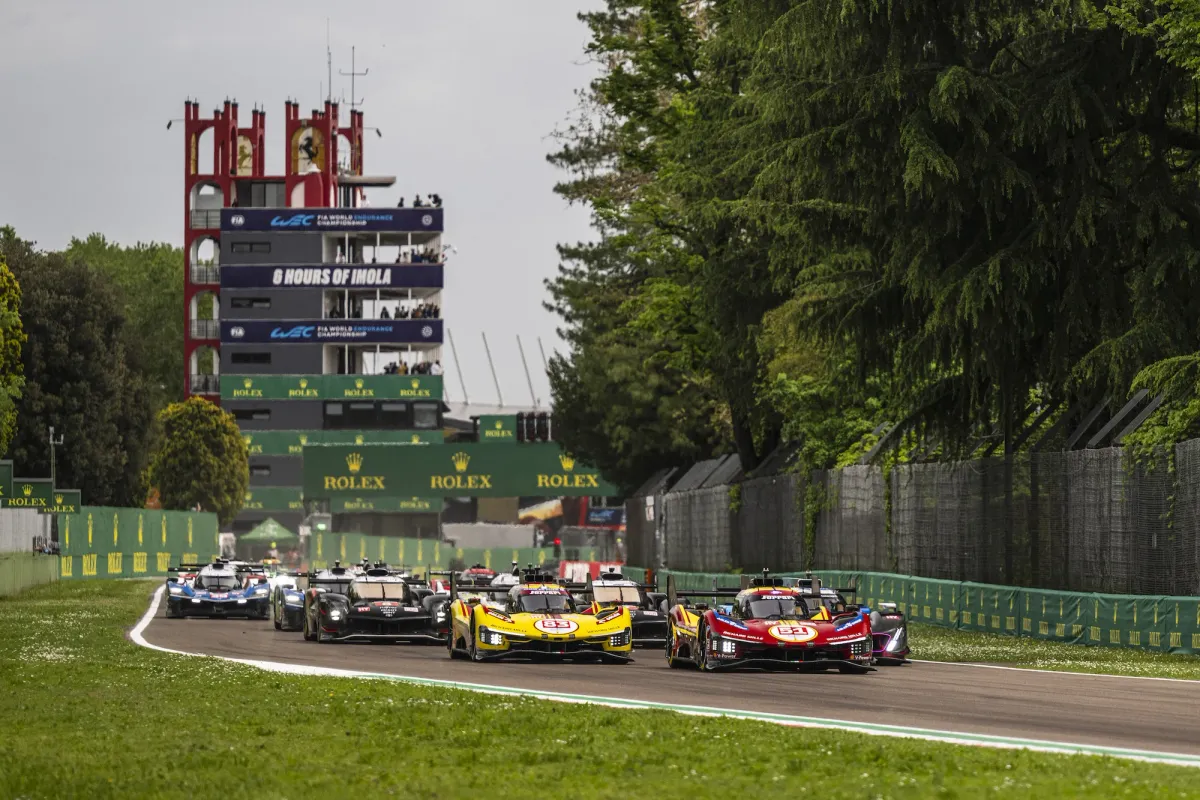
Safety car scuppers Ferrari's lead
The first safety car was called an hour and a half into the race. The lap before this, Calado had a lead of 17 seconds over the nearest non-Ferrari – Kevin Magnussen in the #15 BMW in third position— and 4.6 seconds on Phil Hanson in the second-placed satellite #83 Ferrari.
Looking at the average lap times for the first two hours, it is very obvious Ferrari had a pace advantage. The #51 was running in clean air with no one to hold Calado up, while the cars behind had to, at points, fight for position or be held up.
The safety car, though, scuppered this gap. He built it up again, and when he pitted just after the two hour mark to hand over to Antonio Giovinazzi, the lead stood at over 10 seconds to the #83 Ferrari and #15 BMW.
Mid way through the Italian's stint in the leading Ferrari, Campbell took the lead, having jumped up through the field with an alternate strategy that got them track position.
Although it briefly looked as though Porsche might be able to challenge Ferrari, it was a false dawn: they'd finish eighth in the end, with pace to challenge BMW, Toyota, and Alpine, but not being able to keep up with Ferrari.
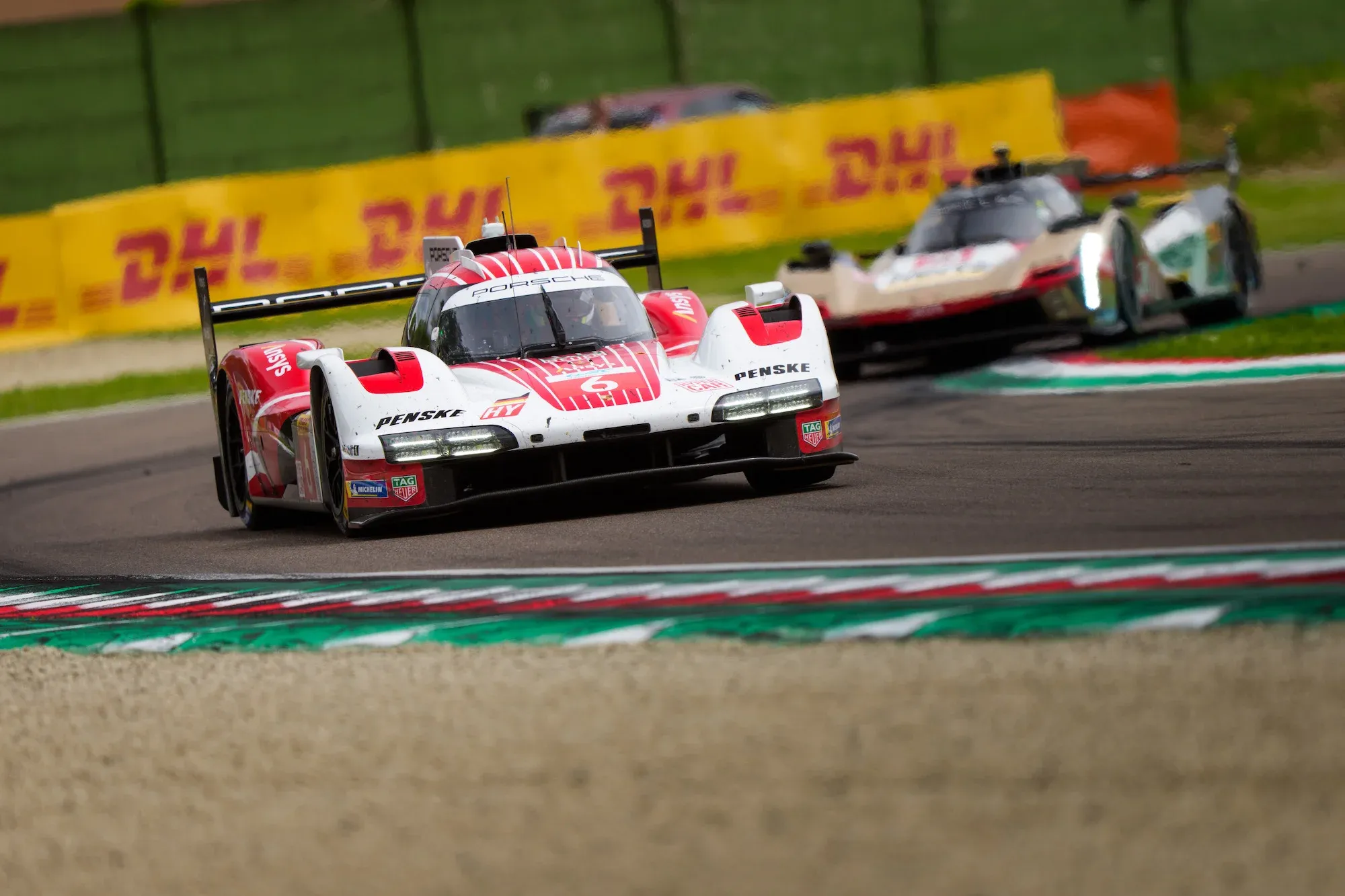
Strategy to the fore in second half
Another safety car was called in the second half of the race, in what Robin Frijns called a 'hard reset'. What he meant by this was everyone was now putting on new tyres, of varying compounds, to challenge in the two and a bit hours of the race.
Ferrari chose a conservative strategy, using soft tyres on the leading #51 Ferrari, now with Pier Guidi at the wheel. This was the conventional, conservative choice because while the medium compound would likely have been the faster choice over a stint – as it's more durable — Ferrari also thought rain was coming. And if rain was coming, the softer tyre would retain heat more than the medium.
As it turned out, the soft was likely the correct choice. Initially, Pier Guidi treated his car's rubber carefully in the opening laps of the stint, perhaps of concerns he wear through it too fast and the tyres then be useless if it did rain.
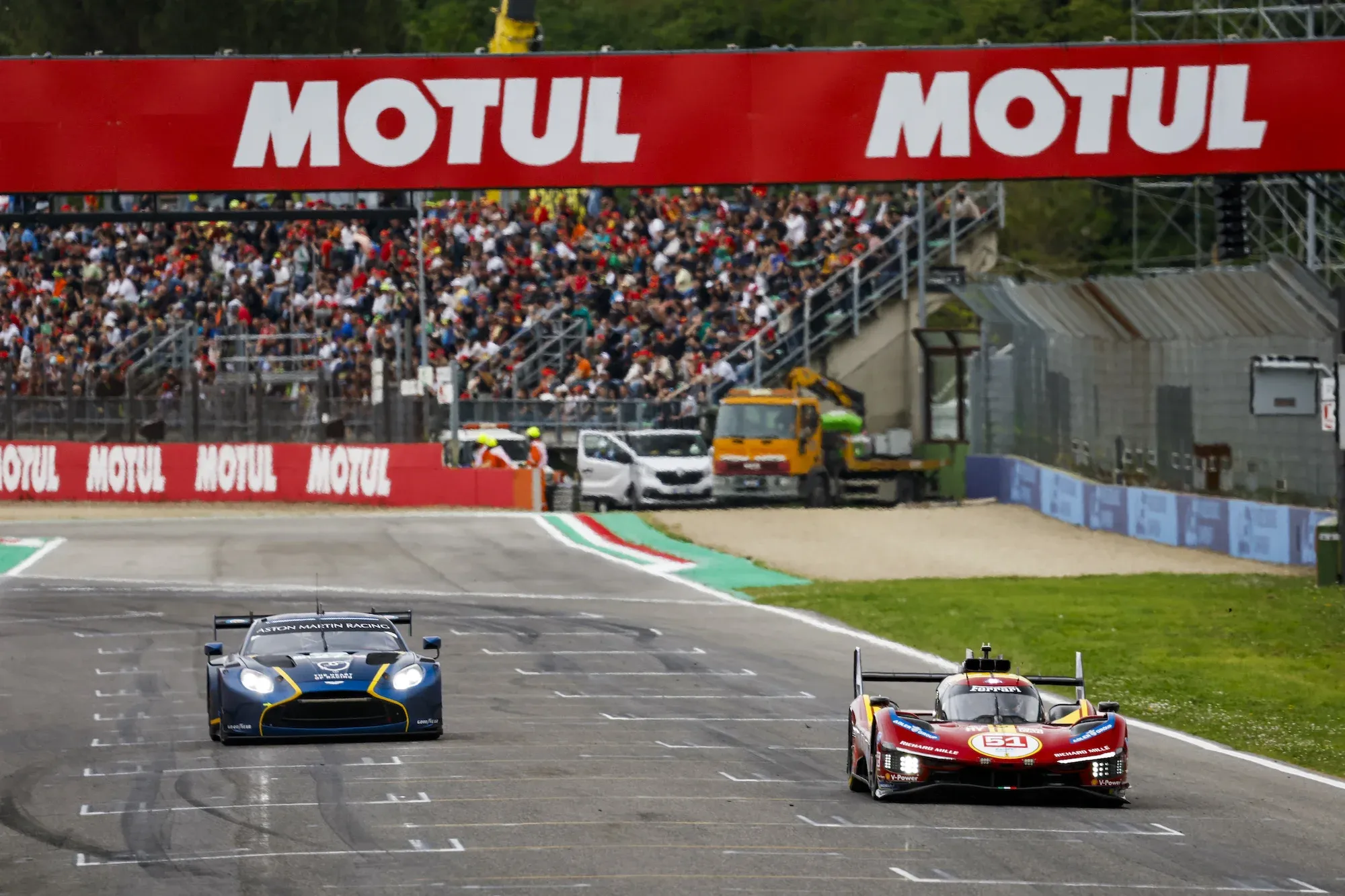
However, the threat of rain dissipated and so Pier Guidi was able to create a gap to Kevin Estre, in the #6 Porsche, and Kamui Kobayashi in the #7 Toyota.
Estre had mediums on his Porsche, while Kobayashi may have had softs on the left and mediums on the right.
However, fuel strategy was a whole different ball game. With two and a bit hours to go when virtually everyone pitted under safety car, another single stop wouldn't be enough to get to the end of the race. Conventionally, there would have to be another stop, late on, for a splash of fuel, just enough to get to the finish.
Looking at the data for the second half of the race, this was the fuel strategy Ferrari, Porsche and Toyota adopted for their leading cars. However, the alternate strategy was to under fuel the cars under safety car, gaining track position, then come in again for a final stop, earlier than the cars on the 'traditional' strategy, and take the rest of the fuel needed to finish the race.
This is what the #36 Alpine and #20 BMW did, as described by Gary Watkins in his excellent Autosport article on the race at Imola.
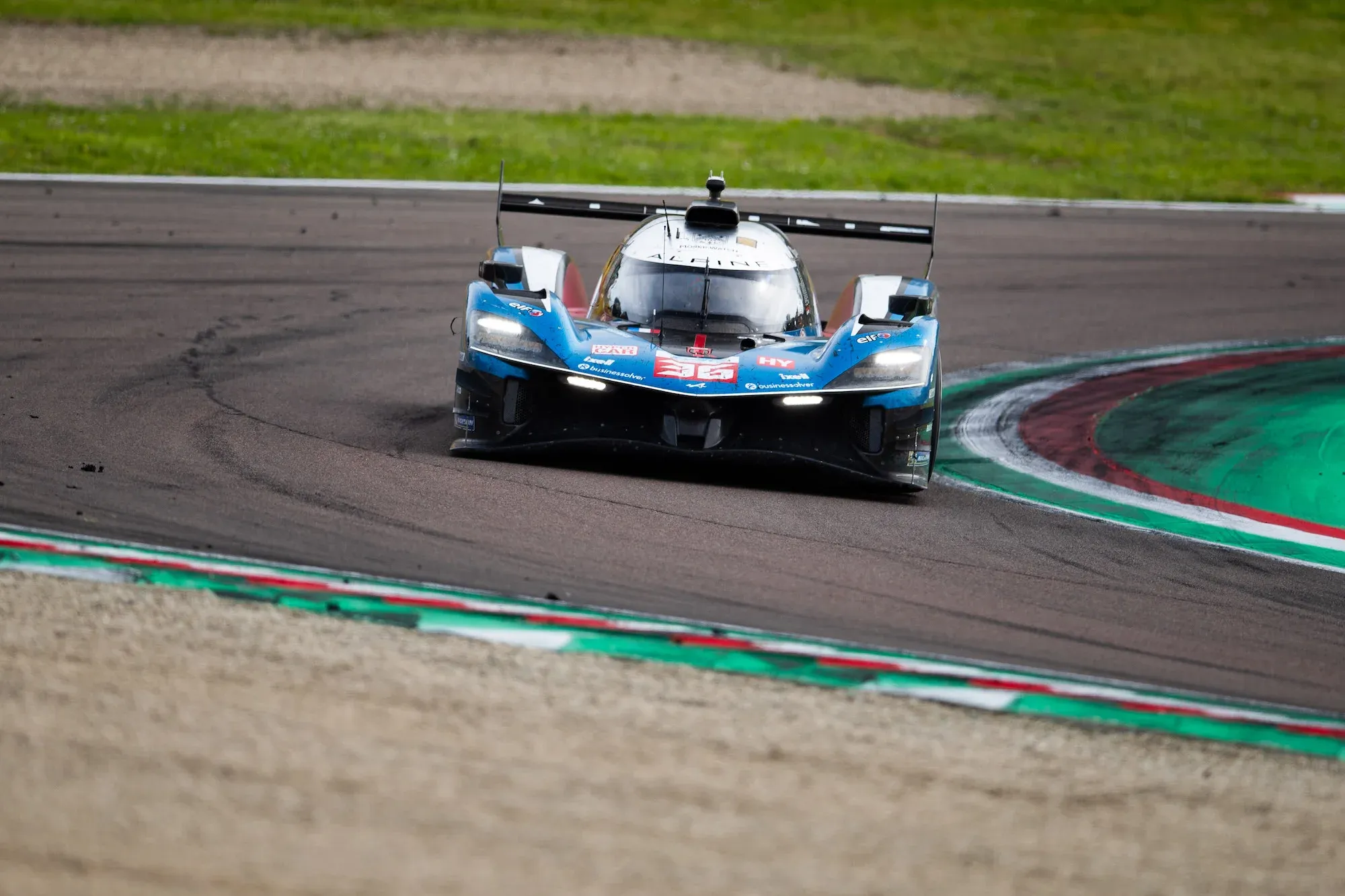
An old adage or idiom in racing is to 'do something different', and this is exactly what they need, correctly predicting cars ahead would opt for something more traditional while the cars with less to lose could try something a bit more radical.
While this meant the two were down in sixth and seventh after the race restarted with just under two hours to go, the benefit was they has new tyres — softs for Schumacher in the Alpine, mediums for van der Linde in the BMW — and light cars.
van der Linde, then, was able to jump temporarily ahead of Pier Guidi at the next round of stops, on lap 172. It was only temporary — the BMW would stop for the final time on lap 192, taking 1:05, while Pier Guidi would stop 13 laps later, for his splash, taking 48 seconds.
But, the strategy moved both BMW and Alpine up to the podium positions and scored them a great victory on a day where many expected Ferrari to dominate the top spots.
Track temperature leaves #83 out to dry
Ferrari's strategy didn't work for the satellite #83 car, though. After the second safety car Robert Kubica sat fifth, behind Dries Vanthoor in the #15 BMW.
While the Ferrari was superior in the hotter temperatures earlier, when the track cooled substantially in the second half of the race, the pace equaled out a little more.
This meant that Kubica was not able to pass D. Vanthoor. Running in dirty air and traffic had detrimental affects on the tyres, overheating them and leading to thermal degradation, leaving Kubica with little grip available to make an overtake.
While the Pole would jump past the Belgian in the final stops, plus Sebastien Buemi in the #8 Toyota, to finish fourth, with Buemi behind then the BMW of D. Vanthoor in sixth, it was somewhat of a disappointing result given they'd run second for a significant portion of the race.
It's obviously impossible to say if the alternate strategy run by Alpine and BMW would have benefitted the #83 Ferrari, but what's clear is a strategy that works for a car in the lead doesn't necessarily work for a car mired in the midfield.
Fuoco and Buemi cost themselves a podium
There was a third strategy option, taken by the #50 Ferrari squad and the #8 Toyota, of short fueling under the second safety car to grab track position, then getting the extra later.
As is visible in the scatterplot graph above, the #50 Ferrari's stop under safety car was just 48 seconds, on lap 133, with Fuoco now in the car. They'd previously stopped on lap 109, so this dropped them down the order as they were essentially making an extra 'free' stop.
At the restart, Fuoco sat 13th, with Buemi a few cars ahead in ninth. Both stopped again soon, lap 148 and lap 149, to collect the extra fuel they'd missed under safety car.
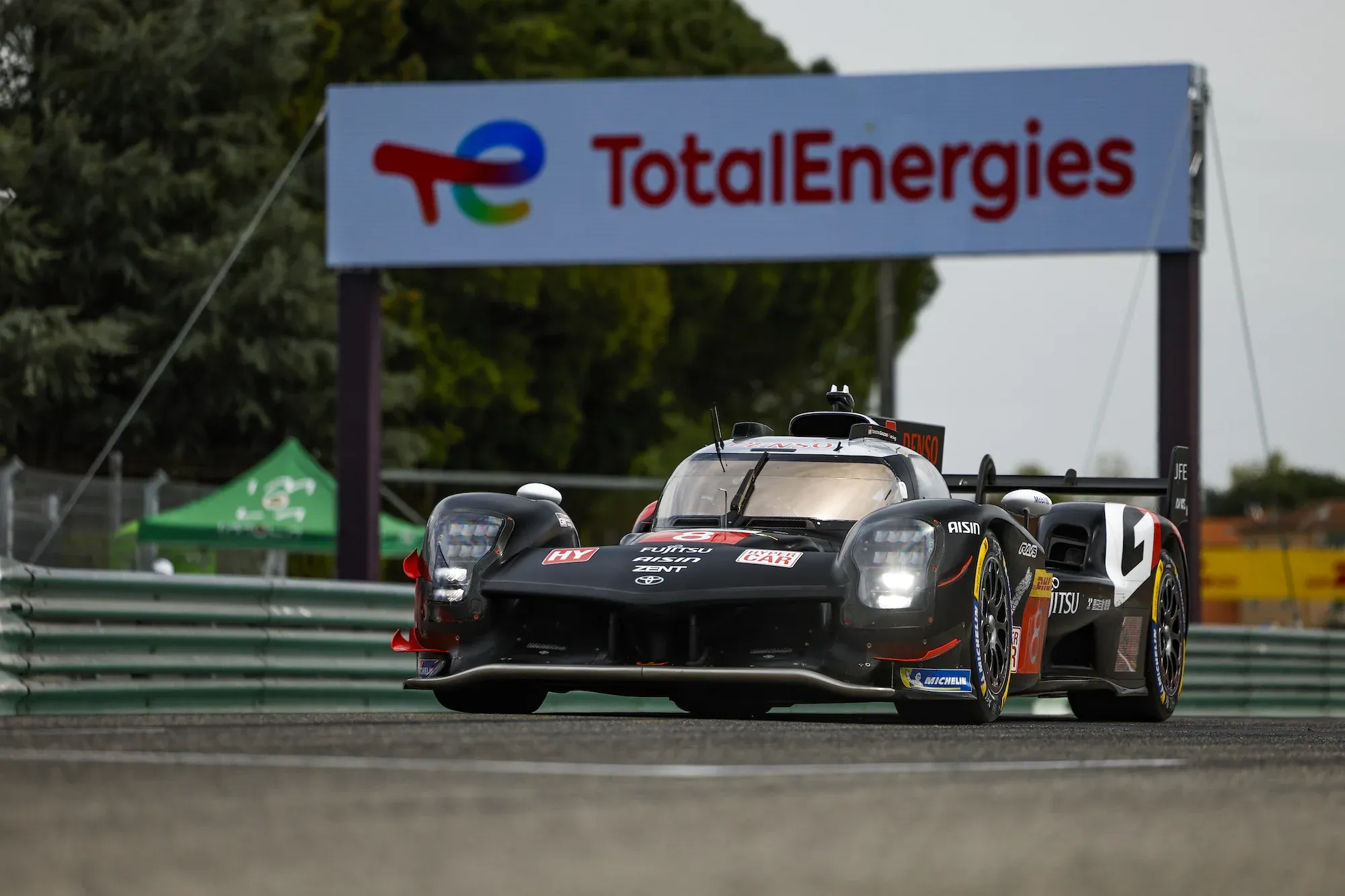
When the rest of the field pitted, Buemi and Fuoco then moved up the order, to lead the race.
Fuoco had the faster car and was desperate to get by the Toyota, but Buemi's superb defensive driving meant Fuoco could not find a way past.
This had to boil over eventually, and it did, colliding at Tamburello. Both survived but Fuoco's resulting puncture dropped him well down the field and out of contention.
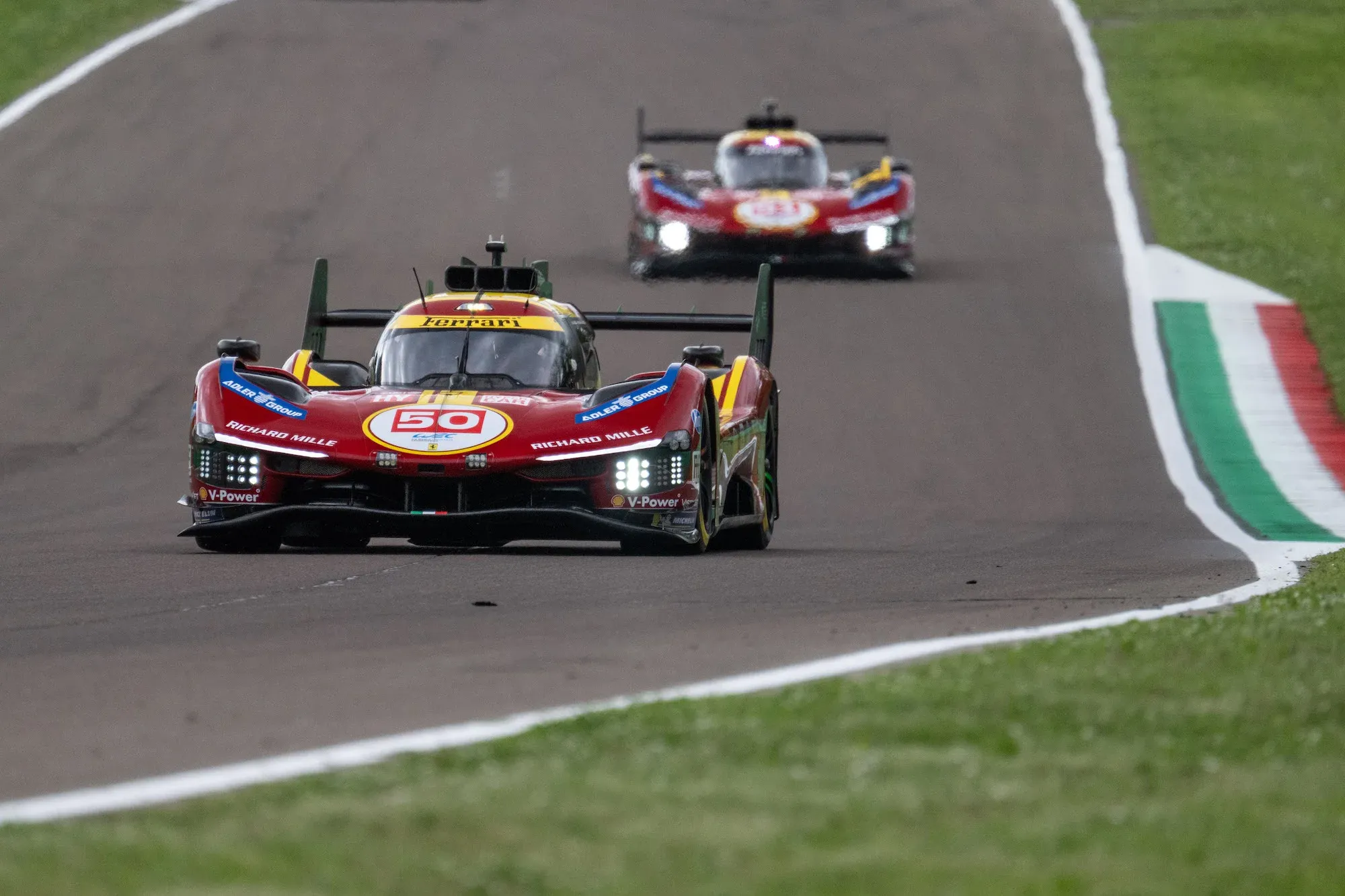
Buemi and the #8 Toyota could have scored a podium here with the unconventional strategy. Instead of fighting Fuoco in a clearly faster car, by letting the Ferrari driver through, Buemi could have taken third with Fuoco potentially finisjing second.
Such as it was, the two fought over the position, with Buemi losing time to BMW's S. van der Linde and Schumacher in the Alpine, possibly costing himself a podium.




